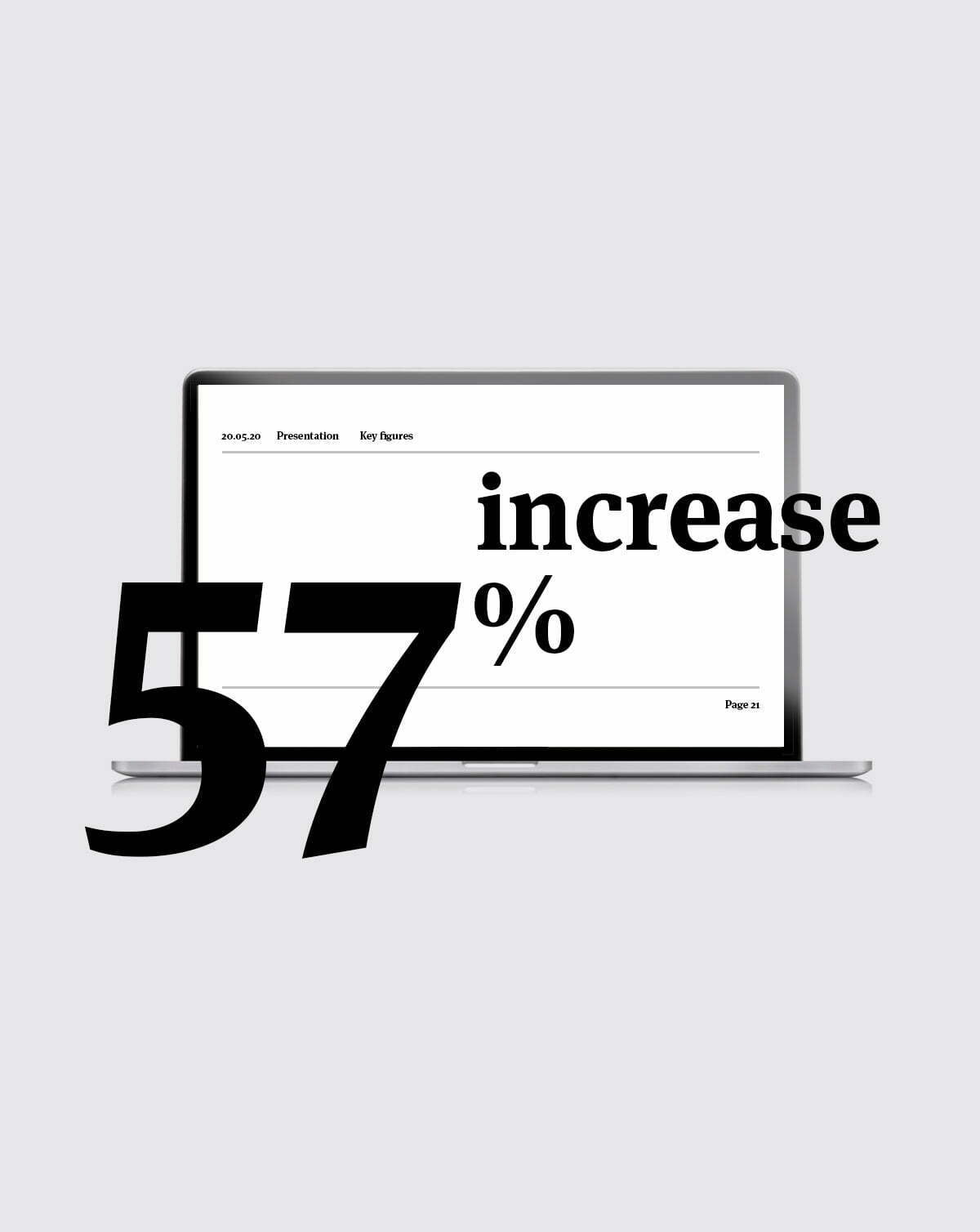Here’s an example: Danfoss has activated the mission statement ‘Engineering Tomorrow’ to show what they are fighting for—shaping the future through leading technical solutions. But not everyone is as far ahead as Danfoss.
The study also shows that only 46% of senior executives believe that their company has a clear ‘why’—and only 38% of those who have a clear ‘why’ feel that their employees understand it.
Something is awry. Rarely are companies able to breathe life into their ‘why’ in a way that matters to the daily work of their employees. Without internal understanding and support, it’s very difficult to achieve external impact—and more loyal customers.
The question then becomes: how can B2B companies bring their ‘why’ to life and achieve any effect from it?
The first serve is yours
Your company’s ‘why’ is either found by others or fostered internally. Alternatively, your company is born with it. And no matter how it’s uncovered, it must be communicated. Both internally and externally.
It’s important to remember that you don’t own your brand and what it means to people. So, you can’t really dictate what your colleagues, customers, and other interested parties think of your company’s ‘why’. But you have the first serve, and you get to initiate the narrative.
That means you need to develop content that tells the story of your ‘why’ and its values: What do you believe in? Why? What value does your ‘why’ produce? What does it mean to people?
You need to look at the usual suspects of your marketing toolbox: the brand film is fantastic at illustrating the bigger picture, printed marketing materials provide space to tell the greater narrative, and branded materials and office posters remind your colleagues of why you do what you do.
Make room for interpretation
The first serve is done. The message is out. However, that doesn’t mean that your work with your ‘why’ is over. Far from it.
To create interest, engagement, and in the end, support for your business, it’s important to make room for interaction so that employees, customers, and stakeholders can interpret and find meaning in your company’s ‘why’.
It can sound a little like high-flying talk and it can seem difficult. And it might be. Often, the inability to develop purpose-focused activities is what causes the gap between management’s and employees’ focus on the ‘why’.
When ‘why’ becomes ‘how’
A ‘why’ is only interesting when it comes into the hands of human beings. When people start using it, acting on it, and activating it. That rarely happens on its own, so after your first serve, you need to initiate and facilitate activities that make others contribute to the understanding of your company’s ‘why’.
Let me give you two good examples of how this can be done.
Danish business intelligence company Inspari works with their ‘why’-focused payoff—‘We take data personally’—to emphasize people as the most important factor in a data-centric industry. They do this through activities such as employee hackathons and ‘Inspari Heroes’, a network for experts across companies to inspire each other.
Danfoss invites experts to ‘Engineering Talks’, a forum to discuss current challenges and megatrends in the industry. By facilitating meetings between experts across industries and across borders, the ‘why’ becomes a catalyst for action. In this way, the ’why’ is turned into concrete activities on how Danfoss is helping solve current and future challenges.
Both examples show the value of letting go and involving relevant parties outside of your own company. The company ‘why’ becomes an integrated way of thinking and working—and it then takes another form: an action indicating ‘how’.
Your ‘why’ wasn’t built in a day
When making your ‘why’ a deep-rooted foundation for all activities, the 80-20 rule is a useful guiding principle: use 20% of your resources to develop your ‘why’ and land your first serve. The remaining 80% should be used on continuous activities that involve and engage your stakeholders (such as employee hackathons and ‘Engineering Talks’).
Unfortunately, too many B2B companies work with a reverse 80-20 rule where nearly all resources are spent developing the ‘why’. The result is a collection of fancy words that end up gathering dust in a drawer and will neither empower your employees’ pride or joy in their work nor strengthen your company’s position in the minds of your customers.
So, get your priorities straight and strengthen your brand. Why not?




